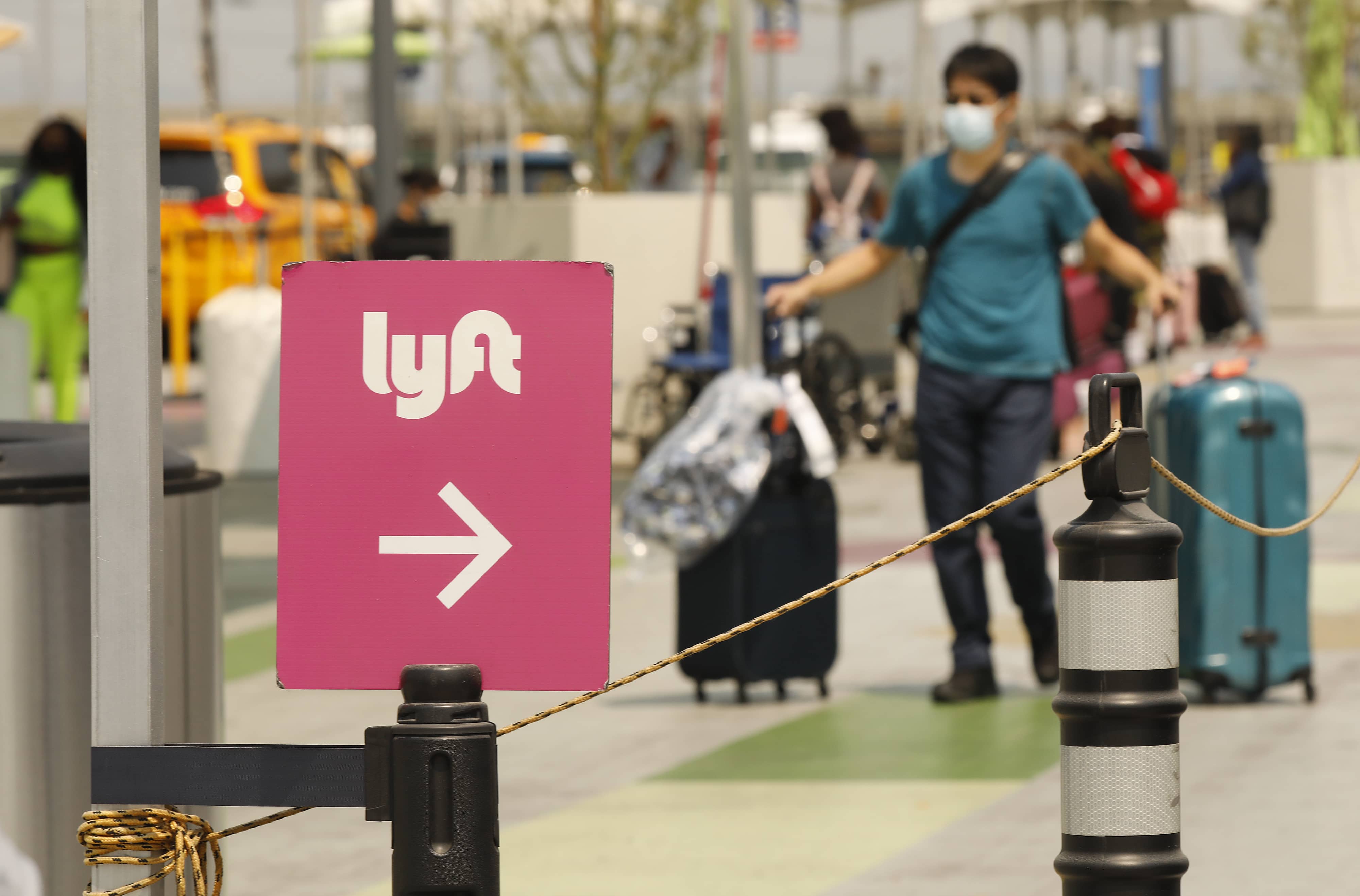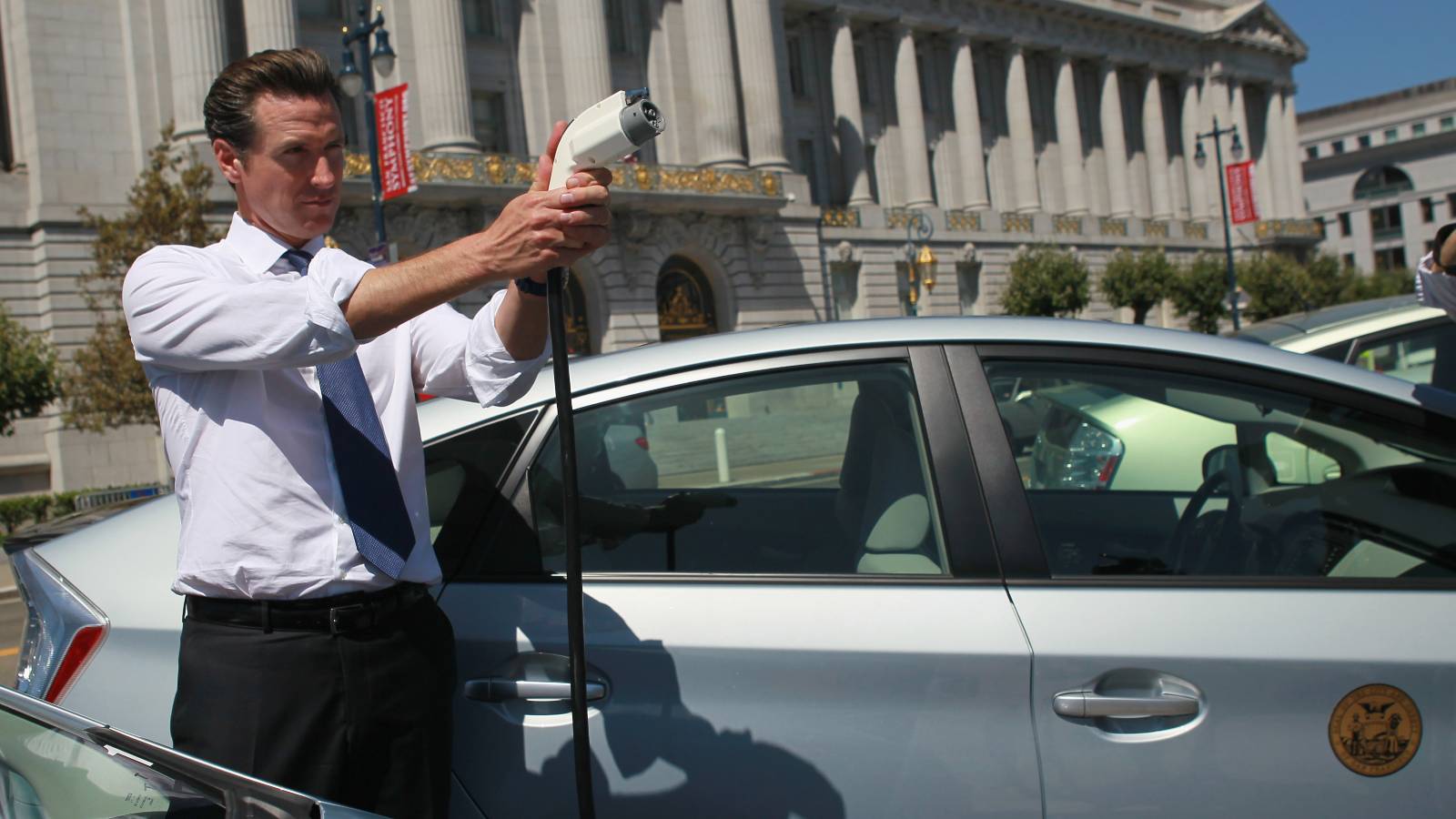Back in June, a measure to tax the wealthiest Californians to raise funds for electric vehicles and wildfire fighting qualified for the state ballot. At first, it seemed like a clear winner. The initiative had the support of hundreds of environmental and public health groups, unions, firefighters, and elected officials. The American Lung Association, the Union of Concerned Scientists, and the California Democratic Party all endorsed it, with 63 percent of voters saying they would support the measure on election day this November.
If any state would support a tax for climate action it would be California, where nearly two-thirds of residents believe local officials should do more to address climate change. But on Tuesday, Californians resoundingly rejected the initiative, with 59 percent voting it down.
What happened? How did an immensely popular environmental ballot initiative fail in a state that prides itself on being one of the most progressive on climate?
In short: A governor broke party ranks, billionaires launched an opposition campaign, and a corporation with a PR problem turned out to be a major liability. Let’s dig in.
The surprise twist came in late July, soon after the California Democratic Party endorsed Prop 30, as the measure was called. Governor Newsom and the California Teachers Association announced their formal opposition. The teachers association took issue with putting “a special interest lock box” on taxes that would traditionally fund schools. Governor Gavin Newsom narrowed his sights on the rideshare company Lyft, the proposition’s primary funder. He started campaigning heavily against the measure, starring in a September television ad where he asked Californians to vote against “[Lyft’s] sinister scheme to grab a huge taxpayer funded subsidy.” He even donated his own re-election funds to the opposition group.
“Gavin Newsom has a lot of credibility as a climate advocate in the state,” said Catherine Wolfram, a climate and energy economics professor at University of California, Berkeley. “The fact that he came out against Prop 30, voters paid attention to that.”
California law requires rideshare companies to log 90 percent of all miles in electric vehicles by 2030, and Newsom accused Lyft of trying to use taxpayer dollars to foot the bill for its transition to electric. Once Newsom spoke out against the measure, it started slipping in the polls.
Corporate involvement in drafting and promoting legislation is something that many Californians take issue with, and with good reason. In 2020, Lyft and Uber pushed through a heavily contested measure, Prop 22, to reclassify workers as contractors, which gets companies off the hook for providing minimum wage, overtime, health care, and other benefits.

But in this case, Prop 30 wasn’t exactly the carve out for Lyft that Newsom said it was. According to the clean transportation groups who devised the measure, Lyft came on, mostly as a funder, once the basic contours of the measure were already established. “There was nothing in there that specifically mentioned Lyft,” said Steven Maviglio, who consulted on press strategy for the proposition. “The measure would have benefitted low- to middle-income Californians by subsidizing electric vehicles and installing charging stations in their neighborhoods. Lyft would have benefitted in that its drivers fall into the category of being Californians.” The measure slated 50 percent of its EV funding for low-income communities, which are disproportionately impacted by air pollution.
The money raised from the Prop 30 tax, an estimated $3.5 billion to $5 billion annually, would have gone to the California Air Resources Board, the Energy Commission, and CAL FIRE, state agencies Newsom funds with his own budget to reach California’s climate targets. These include a 40 percent emissions reduction by 2030 and 100 percent EV sales by 2035 in a state where transportation comprises 50 percent of the state’s greenhouse gas emissions and contributes to some of the worst air quality in the country.
Beyond Lyft’s involvement, there are other reasons Newsom and other Prop 30 opponents pushed back against the measure. Some of the biggest funders of the opposition campaign were billionaires who would have been affected by the 1.75 percent tax increase on incomes over $2 million a year. Top donors to the No to Prop 30 campaign included Netflix Founder Reed Hastings, investment company founder Mark Heising, Sequoia Capital venture capitalist Michael Moritz, and Catherine Dean, chief operating officer of Govern for California, an influential donor network composed primarily of Bay Area venture capitalists and tech executives. Several of the big Prop 30 contributors, like Hastings, Dean, and Heising, were also big supporters of Newsom’s 2022 gubernatorial reelection bid, with some maxing out allowed donation levels.
Newsom expressed his concerns about increasingly relying on high-income earners to fund state programs. California gets most of its revenue from income taxes, and people who make over $2 million — the 0.2 percent of residents, taxed at 13.3 percent of their income — already make up 30 percent of the state’s income tax revenue, according to CalMatters. This pool can be a volatile and unstable source of funding as it is heavily tied to fluctuating markets. Other opponents expressed concerns about driving high-income earners out of the state, although studies show the people moving out of California are low- and middle-income residents who can no longer afford to live there; high earners are the ones moving in.
Opponents also argued that California ballot measures that carve out portions of the budget for specific issues limit the flexibility of the governor and the legislature to allocate funds. “Climate is such a big topic and there are interlocking issues,” said Wolfram. “Ballot propositions are the wrong way to do climate policy.”
Ultimately, Lyft was the opposition’s biggest talking point. “The other side never got around that Lyft had written and funded the campaign,” said Matthew Rodriguez, campaign manager for No on Prop 30.
Maviglio, who has consulted on strategy for California environmental measures like the plastic bag ban and the water bond, warned against reading the vote as an indication of voter’s beliefs on climate change or progressive taxation. It’s much easier to get a “no” vote on a ballot measure than a “yes,” he said, so long as the opposition can sow some seeds of doubt in the minds of voters, which in this case they were able to do by focusing on Lyft. “The conversation was never about the actual policy,” said Bill Magavern, policy director at the Coalition for Clean Air.
What’s next for the future of EVs in the state? The good news is there is money for clean transportation. After lobbying from Newsom, California legislators recently approved a historic $54 billion in climate spending with $10 billion set aside for electric vehicle funding over five years. There is also money from the federal Inflation Reduction Act coming in for EV incentives, as well as an expected $384 million from the Infrastructure Bill for charging stations in California. But experts say it’s nowhere near enough. “The $10 billion is a promise, not a law,” said Magavern, adding that past electric vehicle subsidy programs in the state have consistently run out of money. Lack of charging stations has also emerged as a clear roadblock in efforts to mandate the transition to electric trucks for the shipping industry. And while the past two years have seen big budget surpluses, Governor Newsom has already warned about restrictions next year; Magavern worries that climate change programs will be among the first to be cut.
“We are in a crisis when it comes to climate and air pollution and wildfires,” said Magavern. “To meet the emergency, we needed to do something out of the ordinary. [A tax increase] wouldn’t pass the legislature so it took something like a ballot initiative.”
Meanwhile in New York, a historic $4.2 billion bond act for conservation, water quality infrastructure, flood risk reduction, and climate change mitigation passed with no organized opposition. The measure, which will allow the state to raise money for projects by taking on debt, also had a large coalition of environmental and labor groups behind it, and is projected to create 84,000 jobs across New York State. “New Yorkers said ‘yes’ to investing in clean water to drink, clean air to breathe, reduced flooding, environmental justice, and jobs,” said Kate Boicourt, director of climate resilient coasts and watersheds for the New York chapter of the Environmental Defense Fund. “This act… is a win for everyone and will make an impact in communities across the state for generations to come.”



